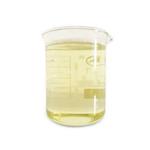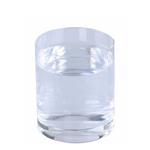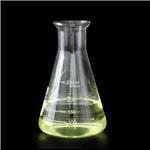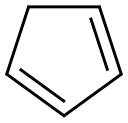- 1,3-Cyclopentadiene
-

- $0.00 / 25KG
-
2023-11-30
- CAS:542-92-7
- Min. Order: 1KG
- Purity: 99%
- Supply Ability: 50000KG/month
- 1,3-Cyclopentadiene
-

- $40.00 / 1kg
-
2023-09-07
- CAS:542-92-7
- Min. Order: 1kg
- Purity: 0.99
- Supply Ability: 10 tons
- 1,3-Cyclopentadiene
-

- $0.00 / 1KG
-
2023-09-06
- CAS:542-92-7
- Min. Order: 1KG
- Purity: 99%
- Supply Ability: 500000kg
|
| | 1,3-Cyclopentadiene Basic information |
| Product Name: | 1,3-Cyclopentadiene | | Synonyms: | pentole;r-pentine;1,3-Cyclopentadiene;2,4-Cyclopentadiene;JACS-542-92-7;1,3-Cyclopentadiene 542-92-7 Cyclopentadiene;542-92-7 Cyclopentadiene;Cyclopentadiene | | CAS: | 542-92-7 | | MF: | C5H6 | | MW: | 66.1 | | EINECS: | 208-835-4 | | Product Categories: | K00001 | | Mol File: | 542-92-7.mol |  |
| | 1,3-Cyclopentadiene Chemical Properties |
| Melting point | -85°; mp 32.5° | | Boiling point | bp760 41.5-42.0° | | density | d40 0.8235; d410 0.8131; d420 0.8021; d425 0.7966; d430 0.7914 | | vapor pressure | 381 at 20.6 °C, 735 at 40.6 °C, 1,380 at 60.9 °C (Stoeck and Roscher, 1977) | | refractive index | nD16 1.44632 | | solubility | Miscible with acetone, benzene, carbon tetrachloride, and ether. Soluble in acetic acid, aniline, and
carbon disulfide (Windholz et al., 1983). | | form | Colorless liquid | | pka | 16(at 25℃) | | Water Solubility | 10.3 mM at 25 °C (shake flask-UV spectrophotometry, Streitwieser and Nebenzahl, 1976) | | Henry's Law Constant | 5.1 at 25 °C (approximate - calculated from water solubility and vapor pressure) | | Exposure limits | TLV-TWA 75 ppm (~202 mg/m3) (ACGIH,
NIOSH, and OSHA); IDLH 2000 ppm
(NIOSH). | | Stability: | Stable at room temperature. Incompatible with oxidizing agents, acids and a wide variety of other compounds. May form peroxides in storage. May undergo spontaneous polymerisation. Decomposes on heating. Highly flammable. Mixtures with air are explosive. | | EPA Substance Registry System | Cyclopentadiene (542-92-7) |
| | 1,3-Cyclopentadiene Usage And Synthesis |
| Description | Cyclopentadiene is a flammable, colorless liquid with a sweet odor, like turpentine. Molecularweight=66.10; Specific gravity (H2O:1): 0.8; Boilingpoint=42.℃; Freezing/Melting point=285℃; Vaporpressure=400 mmHg at 20℃; Flash point=25℃ (oc);Autoignition temperature=640℃. Insoluble in water. | | Chemical Properties | Cyclopentadiene is a flammable, colorless liq-
uid with a sweet odor, like turpentine. | | Chemical Properties | colourless liquid | | Chemical Properties | 1,3-Cyclopentadiene is a colorless liquid that dimerizes
easily in the presence of peroxides and trichloroacetic acid
to a colorless solid. | | Physical properties | Colorless liquid with a turpentine-like odor. Odor threshold concentration is 1.9 ppm (quoted,
Amoore and Hautala, 1983). | | Uses | Cyclopentadiene is used in the manufactureof resins, in the synthesis of sesquiterpenesand camphors, and as a ligand in the preparationof metal complexes. | | Uses | In manufacture of resins; in organic
synthesis | | Uses | manufacture of resins; in organic synthesis as the diene in the Diels-Alder reaction producing sesquiterpenes, synthetic alkaloids, camphors. | | Definition | A cyclic hydrocarbon made by
cracking petroleum. The molecules have a
five-membered ring containing two carbon-
carbon double bonds and one CH2
group. It forms the negative cyclopentadienyl
ionC5H5-, present in sandwich compounds,
such as ferrocene. | | Definition | cyclopentadiene: A colourless liquidcyclic alkene,C5H6; r.d. 0.8021;m.p. –97.2°C; b.p. 40.0°C. It is preparedas a by-product during the fractionaldistillation of crude benzenefrom coal tar. It undergoes condensationreactions with ketones to givehighly coloured compounds (fulvenes)and readily undergoes polymerizationat room temperature togive the dimer, dicyclopentadiene.Cyclopentadiene itself is not an aromaticcompound because it does nothave the required number of pi electrons.However, removal of a hydrogenatom produces the stablecyclopentadienyl ion,C5H5-, whichdoes have aromatic properties. Inparticular, the ring can coordinate topositive ions in such compounds asferrocene. | | Production Methods | This compound occurs in the C6–C8 petroleum distillation
fraction, and in coke oven light oil fractions. It is
produced by dehydrogenation of cyclopentadiene or monomerization
of its dimer. | | General Description | 1,3-Cyclopentadiene is a colorless liquid with an irritating, terpene-like odor. Bp: 42.5°C; Flash point: 77°F. Density: 0.805 g cm-3. | | Reactivity Profile | 1,3-Cyclopentadiene is incompatible with strong oxidizing agents. Ignites on contact with oxygen (O2) and ozone (O3). Explodes on contact with fuming nitric acid or a mixture of sulfuric acid and nitrogen tetroxide. Reacts vigorously on contact with potassium hydroxide and other strong bases. Mixtures with air are explosive. Presents a moderate explosion hazard when exposed to heat or flame. Decomposes violently at high temperature and pressure. May form explosive peroxides in storage. Undergoes a spontaneous dimerization at room temperature to give DI1,3-Cyclopentadiene (C10H12, CAS No: 77-73-6), which is a low-melting solid (melting point: 32.5°C). The reaction is strongly exothermic (Hazardous Chemicals Desk Reference, p. 360 (1987)), but occurs sufficiently slowly that 1,3-Cyclopentadiene can be said to be stable at room temperature. The dimerization accounts for the partial or complete solidification of liquid 1,3-Cyclopentadiene in storage. Polymerization occurs more rapidly and extensively at higher temperatures. When heated to 180-200°C, 1,3-Cyclopentadiene gives poly1,3-Cyclopentadiene, a white waxy solid. Stronger heating breaks down poly1,3-Cyclopentadiene and re-generates the monomeric 1,3-Cyclopentadiene as a vapor. The vapor decomposes violently at higher temperatures and pressures. | | Health Hazard | Cyclopentadiene exhibited low toxicity inanimals. Inhalation produced irritation of theeyes and nose. A 3-mL amount injected subcutaneouslyinto rabbits resulted in narcosis,convulsions, and death (von Oettingen 1940).A dose of≤ 1 mL was nontoxic. Repeatedexposure to 500 ppm caused liver and kidneyinjuries in rats; but longer repeated exposuresto 250 ppm produced no such effects in testanimals (ACGIH 1986). An oral LD50 valuein rats for the dimeric form has been recordedas 820 mg/kg (Smyth 1954). | | Fire Hazard | Flammable liquid; flash point (open cup)
32°C (90°F); fire- extinguishing agent: dry
chemical, foam, or CO2; a water spray
may be used to cool the surroundings. Prolonged
exposure to air may cause peroxide
formation. | | Safety Profile | Low toxicity by
ingestion. A dangerous fire hazard when
exposed to heat or flame; can react with
oxidizing materials. Moderate explosion
hazard in the form of gas when exposed to
heat or by chemical reaction. It decomposes
violently at hgh temperatures and pressures.
dimerization is highly exothermic.
Explosive reaction with fuming nitric acid,dinitrogen tetroxide, sulfuric acid. Reaction
with nitrogen oxide + oxygen forms an
explosive product. Reaction with oxygen
forms a flame-sensitive explosive product.
Ignites on contact with oxygen + ozone.
Reacts vigorously on contact with potassium
hydroxide. Incompatible with oxides of
nitrogen, sulfuric acid. When heated to
decomposition it emits acrid smoke and
fumes. | | Potential Exposure | Cyclopentadiene is used as an inter-
mediate in the manufacture of resins, insecticides, fungi-
cides, and other chemicals. | | First aid | If this chemical gets into the eyes, remove anycontact lenses at once and irrigate immediately for at least15 min, occasionally lifting upper and lower lids. Seek medical attention immediately. If this chemical contacts theskin, remove contaminated clothing and wash immediatelywith soap and water. Seek medical attention immediately. Ifthis chemical has been inhaled, remove from exposure,begin rescue breathing (using universal precautions, including resuscitation mask) if breathing has stopped and CPR ifheart action has stopped. Transfer promptly to a medicalfacility. When this chemical has been swallowed, get medical attention. Do NOT induce vomiting. | | Environmental fate | Biological. Cyclopentadiene may be oxidized by microbes to cyclopentanone (Dugan, 1972).
Chemical/Physical. Dimerizes to dicyclopentadiene on standing (Windholz et al., 1983). | | storage | Color Code—Red: Flammability Hazard: Store ina flammable liquid storage area or approved cabinet awayfrom ignition sources and corrosive and reactive materials.May form peroxides in storage. Prior to working withcyclopentadiene you should be trained on its proper handling and storage. Cyclopentadiene must be stored to avoidcontact with strong oxidizing agents because violent reactions occur. Cyclopentadiene must be stored at temperaturesbelow 0℃ or it may undergo an explosive chemical reaction. Sources of ignition, such as smoking and open flames,are prohibited where cyclopentadiene is used, handled, orstored in a manner that could create a potential fire orexplosion hazard. Metal containers involving the transfer ofthis chemical should be grounded and bonded. Where possible, automatically pump liquid from drums or other storagecontainers to process containers. Drums must be equippedwith self-closing valves, pressure vacuum bungs, and flamearresters. Use only nonsparking tools and equipment, especially when opening and closing containers of this chemical. Sources of ignition, such as smoking and open flames,are prohibited where this chemical is used, handled, orstored in a manner that could create a potential fire orexplosion hazard. Wherever this chemical is used, handled,manufactured, or stored, use explosion-proof electricalequipment and fittings. | | Shipping | UN1993 Flammable liquids, n.o.s., Hazard
Class: 3; Labels: 3-Flammable liquid, Technical Name
Required. | | Purification Methods | Dry the diene with Mg(ClO4)2 and distil it rapidly as it dimerises readily at room temperature. It should be used immediately or stored in a Dry Ice or an ice-salt bath. HIGHLY FLAMMABLE. [Moffett Org Synth Coll Vol IV 238 1963.] Cyclopentadiene Dimer (4,7-methano-3a,4,7,7a-tetrahydroindene) has [77-73-6], M 132.3, m 33o, b 170o/atm, and d2 5 0.986; add ~0.05% of 2,6-di-tert-butyl-4-methylphenol as stabilizer. Cyclopentadiene is prepared when required by de-polymerising the technical grade dimer by heating it carefully under a fractionating column [Wilkinson Org Synth Coll Vol IV 467 1963], as described by Moffett (above reference), or by adding the dimer at a steady rate onto mineral oil heated at 240-270o (Korach et al. Org Synth 42 50 1962). [Beilstein 5 II 391.] | | Incompatibilities | Vapors may form explosive mixture with
air. Converted (dimerized) to higher-boiling dicyclopenta-
diene upon standing in air and @ 32
F/0
C; this conversion
may be violent and exothermic; this reaction is accelerated
by peroxides or trichloroacetic acid. Reacts violently with
potassium hydroxide. Violent reaction with strong oxidi-
zers; strong acids; dinitrogen tetroxide; magnesium.
Incompatible with oxidizers (chlorates, nitrates, peroxides,
permanganates, perchlorates, chlorine, bromine, fluorine,
etc.); contact may cause fires or explosions. Keep away
from alkaline materials, strong bases, strong acids, oxoa-
cids, epoxides, alkaline earth metals, nitrogen oxides. May
accumulate static electrical charges, and may cause ignition
of its vapors. | | Waste Disposal | Dissolve or mix the material
with a combustible solvent and burn in a chemical incinera-
tor equipped with an afterburner and scrubber. All federal,
state, and local environmental regulations must be
observed. |
| | 1,3-Cyclopentadiene Preparation Products And Raw materials |
|